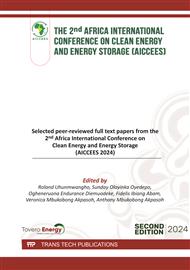p.3
p.19
p.33
p.43
p.53
p.65
p.85
p.121
A Two-Parameter Computational Thermodynamic Analysis of Hydrogen-Impurity Mixtures in a Repurposed Pipeline
Abstract:
In this study, a two-parameter computational thermodynamic analysis of a hydrogen-impurity mixture in a repurposed pipeline was performed. The hydrogen purity is a vital aspect of the hydrogen value chain, and it is essential to constantly monitor its purity. We anticipate that refineries will use repurposed pipelines for bulk hydrogen transportation to consumers; however, these pipelines are known to contain impurities. Therefore, there is a need for such an analysis. This study considered two basic thermodynamic parameters: the pressure and gas molar concentration. The Peng–Robinson equation of state was used for the analysis. We implemented octave programming for the Newton-Raphson numerical scheme to obtain the molar volume of the pure hydrogen. Four scenarios were considered: scenario 1 (only hydrogen), scenario 2 (hydrogen mix with H2S), and scenario 3 (hydrogen mix with H2S, and pentane), and scenario 4 (hydrogen mix with H2S, pentane, and propane). We studied the variation in gas pressure with molar concentration. The results showed that, as the number of impurities considered in the analysis increased, the pressure decreased. The pressure of scenario 1 and 2 is approximately Pa, scenario 3 is around Pa, and scenario 4 is around Pa. We can develop a non-destructive acoustic emission hydrogen quality monitoring system by considering how impurities in hydrogen moving through a repurposed pipeline might affect the pressure of the gas moving through the pipeline.
Info:
Periodical:
Pages:
33-40
Citation:
Online since:
February 2025
Price:
Сopyright:
© 2025 Trans Tech Publications Ltd. All Rights Reserved
Share:
Citation:


